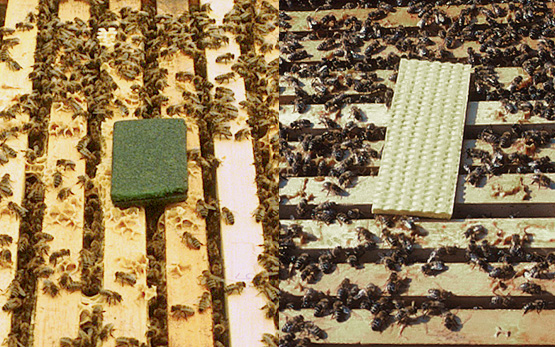Dans les années 90, Le Centre de recherche apicole a contribué au screening de plus de 100 huiles essentielles et de leurs composants pour leur potentielle utilisation dans la lutte contre varroa. Si les huiles de sauge, hysope et de thym se sont avérées intéressantes, seul le thymol a été utilisé dans des produits acaricides. Les traitements au thymol exigent peu de travail, et il existe sur le marché différentes préparations dont les avantages et les inconvénients sont présentés sous "Apilife VAR" - Un produit de lutte contre Varroa à base de thymol" et sous "THYMOVAR pour lutter contre Varroa jacobsoni".
Use of essential oils for the control of Varroa jacobsoni (Oud.) in honey bee colonies (anglais) (PDF, 1 MB, 20.01.2017)
A. Imdorf, S. Bogdanov, R. Ibáñez Ochoa, N. W. Calderone (1999)







